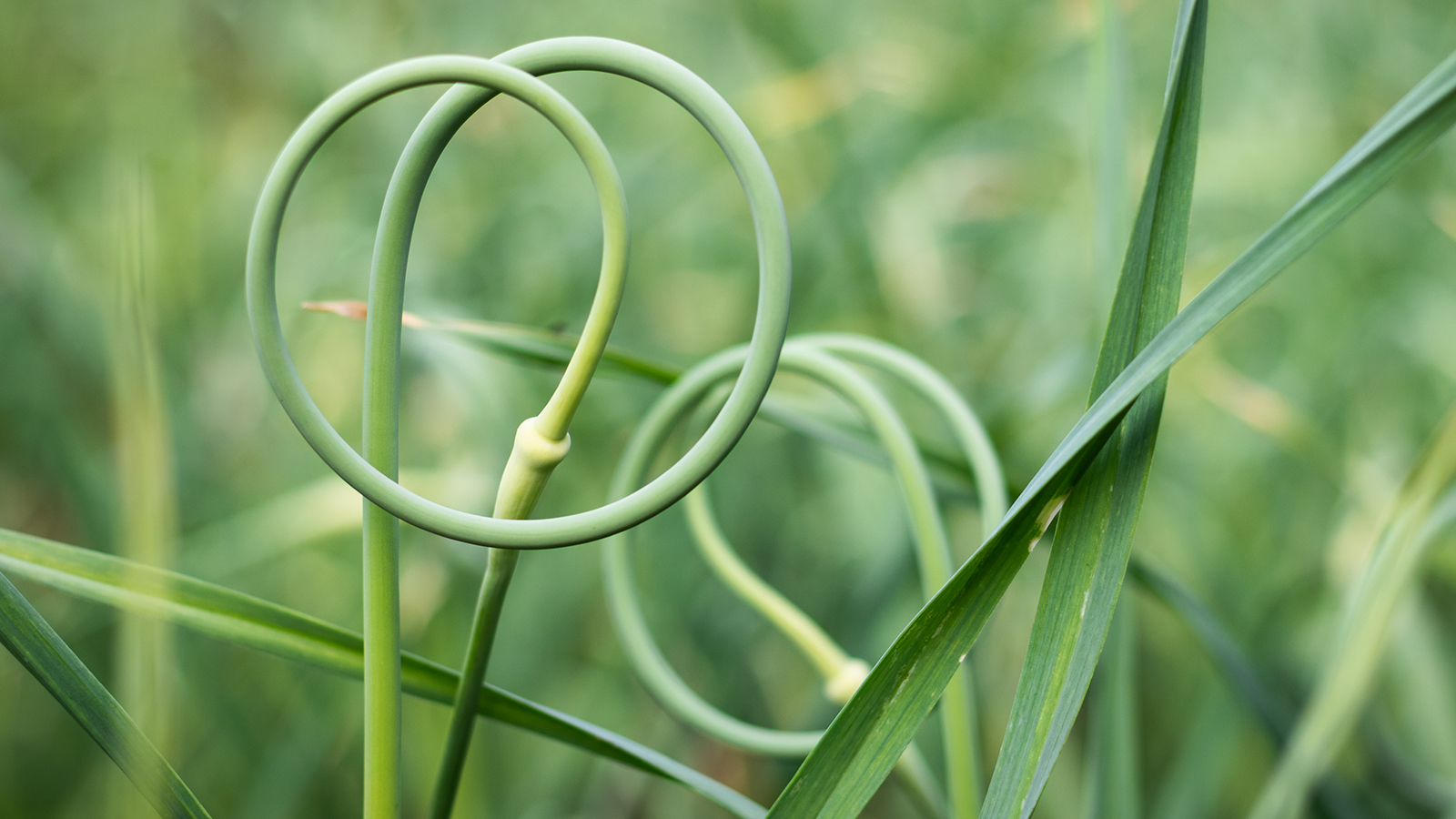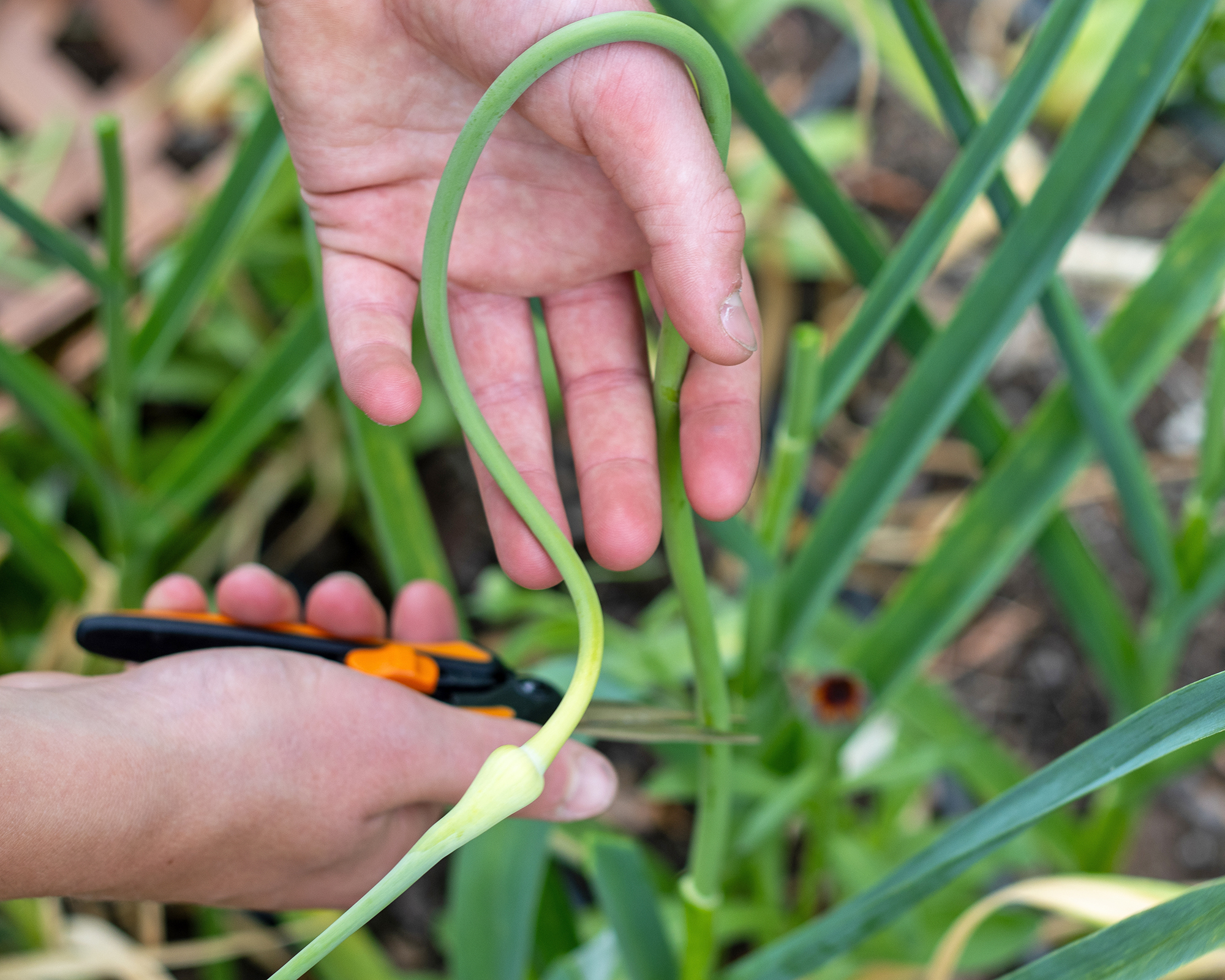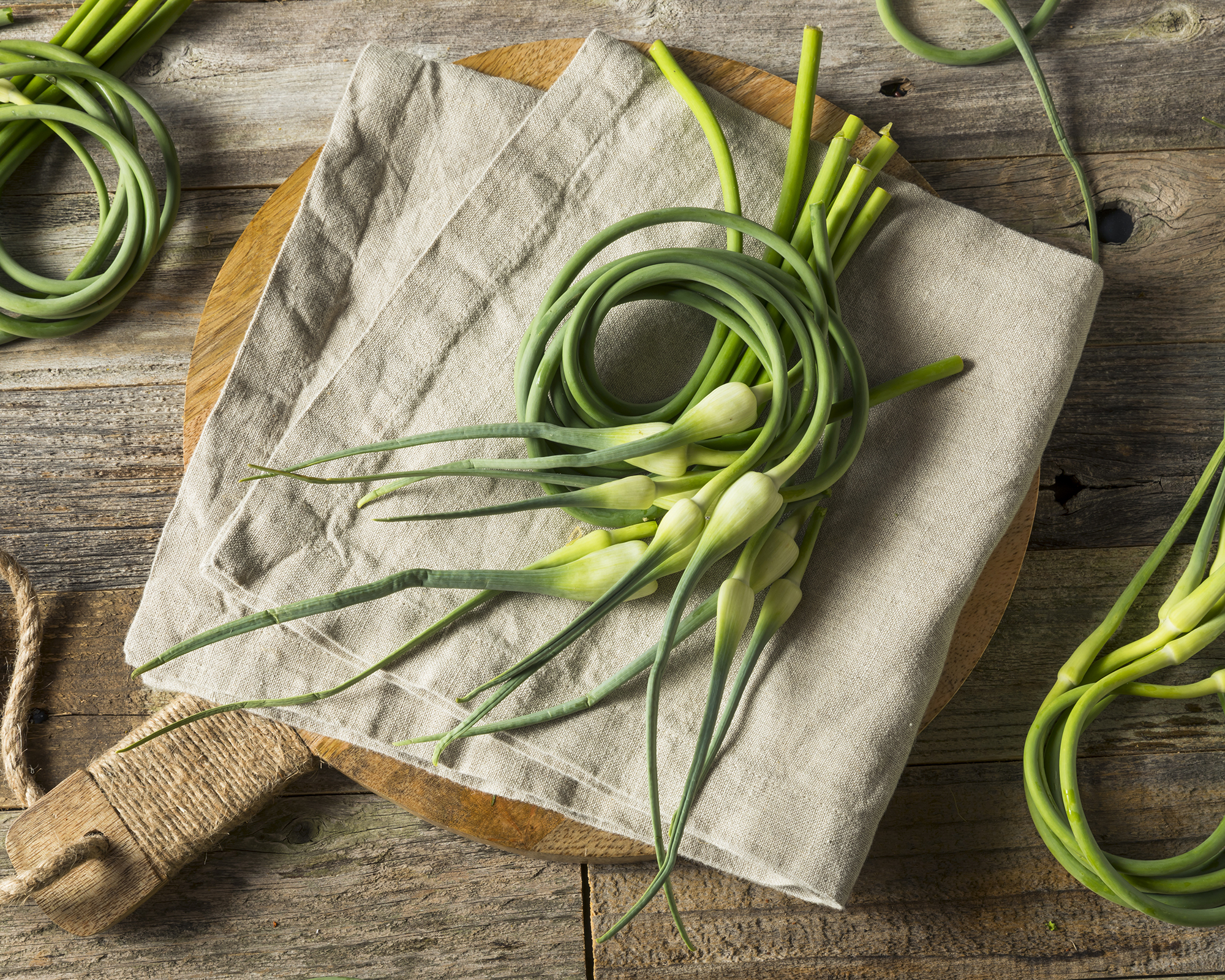What Are Garlic Scapes? How to Grow and Harvest This Tasty Bonus Crop
Garlic scapes are the first tender shoots of garlic plants – and they're much too good to waste. Learn how to harvest and use these flavorful early greens.


Garlic scapes are one of those little surprises in the garden that many beginners don’t expect. If you’ve planted hardneck garlic, you’ll notice these curly green stems in late spring, twisting and looping above the leaves. Gardeners often see them as a bonus harvest – an extra, tasty crop with lots of culinary uses.
Scapes are a key part of the garlic cycle, appearing when the plant is nearly ready to put its energy into flowering. If you’re learning how to grow garlic, then knowing what to do with these shoots will help you get the most out of your plants. You can decide whether you cut them for larger bulbs, leave them for garlic bulbils, or cook them straight from the garden. Some gardeners treat them as a delicacy – and once you taste them, you’ll see why.
The first time you grow garlic, you might not know when to expect scapes, or even what to do when they show up. Don’t worry – they’re simple to manage once you know a few tips.
What Are Garlic Scapes?
Garlic scapes are the flowering stalks that grow from hardneck garlic plants. Unlike the leaves, they are round, firm, and curl into spirals as they lengthen. You’ll see them appear in late spring to early summer, usually a few weeks before the bulbs are ready to harvest. Left alone, scapes will eventually straighten and produce small bulblets (called bulbils) at the top, which can be used for propagation but take years to mature.
Bear in mind you won’t find scapes on softneck or elephant garlic – only hardneck types of garlic will grow them.
Why Do Gardeners Cut Garlic Scapes?
Most gardeners cut garlic scapes because leaving them in place diverts energy into flowering rather than bulb growth. By removing the scapes, the plant redirects that energy back into the bulb underground, which usually means larger, plumper cloves. Cutting scapes also gives you a supplementary harvest weeks before the bulbs are ready.
That said, you don’t have to cut them if you’re curious about how to propagate garlic from bulbils or want to experiment with saving garlic seeds for growing. Some growers like to leave a few plants untouched just to see the flowers develop. But for most gardeners, cutting is the preferred option to improve yield and get that bonus crop.
Sign up for the Gardening Know How newsletter today and receive a free copy of our e-book "How to Grow Delicious Tomatoes".

When to Harvest Garlic Scapes
Scapes are best harvested when they are still tender and have curled once or twice. At this stage, the texture is crisp but not woody, and the flavor is pleasantly garlicky without being overpowering. If you wait too long, the stems will toughen, making them chewy rather than tender.
The timing depends on your climate. In most areas, scapes are ready to harvest in late spring – often May to June, depending on your USDA hardiness zone and the planting time. In cooler northern gardens, they may come a little later, while in warm regions, they can appear earlier.
- Zones 3 to 5: Mid to late June
- Zones 6 to 7: Early to mid June
- Zones 8 to 9: Late May to early June
You can better anticipate the harvest if you make a note of your planting date, check the suggested days to maturity, then work it out on the calendar. You can expect scapes about three to four weeks before it's time for harvesting garlic.
How to Harvest Garlic Scapes
Harvesting scapes is simple. Collect the scapes as soon as they curl once or twice, and try to harvest in the morning when the plants are crisp and cool. It's important to use clean garden shears or a sharp knife, like Fiskars' Folding Knife for Produce Harvesting, available on Amazon. Never tug or pull the scapes – you risk damaging the stem and bulb below. Cut the stalk low on the plant, just above the top leaf.
After cutting the scapes, the main bulbs will continue to swell until harvest.

How to Use Garlic Scapes in the Kitchen
The tender stalks may be used in stir fries and soups, and they’re also wonderful grilled or roasted whole with a little oil and salt until lightly charred. Many gardeners blend garlic scapes into pesto or sauces.
The flavor is milder than a garlic clove – more like a mix between garlic, green onion, and chives. That means you can chop them finely and use them just as you would chives, sprinkled over salads, stirred into scrambled eggs, or added as a garnish for soups.
Garlic scapes also work well sliced into omelets, tossed into pasta dishes, or sautéed quickly with butter. Some cooks enjoy pickling them for a tangy side dish. Their versatility is one reason so many gardeners look forward to this bonus harvest.
Fresh scapes keep for a couple of weeks in the refrigerator, especially if wrapped in a damp towel or placed in a perforated bag, like these Earthwise Reusable Mesh Produce Bags from Amazon. For longer storage, you can freeze scapes. Blanch them quickly, cool, and then freeze for use later in the year.

Bonnie Grant is a professional landscaper with a Certification in Urban Gardening. She has been gardening and writing for 15 years. A former professional chef, she has a passion for edible landscaping.